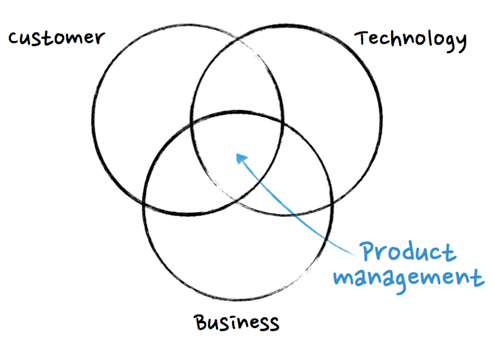There are three ways that drive how you develop your product:
- by customers and business feedbacks
- by comparing to your competitors
- by product vision
Level one — User Feedbacks
As a Product Manager, often times you hear people who are using your product report feedbacks. It could be bugs that are hurting your users, it could be better ways to solve a problem that your users are having. When it is a product of scale, meaning tens of thousands of users and stakeholders are involved, a PM can be overwhelmed by the feedbacks and distracted from building something that helps you win the long-term game. Then of course, if you ignore all of the feedbacks, you risk losing the users and hurting the existing business as well.
This is a micro view of a PM, which can happen to Project Managers, Program Managers, Product Marketing Managers, Product Operations, or Business Leaders, as at times, in the context of managing a global scale product, these roles can act as a Product Manager of a sort. When I worked at Alibaba.com, we had HQ PMs and regional PMs responsible for this type of problems. For HQ PMs, there are the true technical Product Managers who own the roadmap of the platform, and there are what we call “Central Ops” Program Managers (they can be referred to as “Business Product Manager” or “Global Product Marketing Manager” in other companies) who are responsible for collecting feedbacks and providing enablement and solutions for specifically this type of problems. So in other words, Customer Feedback is Product Management, in a micro point of view.
This level one is critical, especially in the early stage or mature stage of your product lifecycle. In the early stage, you need to talk to your closest customers and users, in order to find the product market fit. And in the mature stage, you have probably had a comprehensive and complex feature portfolio with a variety of customers across regions and you need to rely on your “business PM” or account managers to collect feedbacks. Two abilities are crucial: 1) the ability to extract truly valuable information from your users, and 2) to incorporate that into your broader product vision. For an early-stage PM, you have to do both while for a mature-stage PM, you have the luxury / curse to allocate task one to others.
Level 2 — Competition Comparison
Now, if we take a step back, and look at a more macro view of the product space, we are then in the level two — comparing our product to our competitors, sometimes feature by feature, sometimes from a customer type point of view.

The level two of Product Development is the typical buyer mindset exercise where we look at the features, functionalities, and performance of our product and the market we are in, and compare them against our competitors. We do that all the time when we do the research before we try to buy something online.
For most industries or categories, your product is not the first, and even if your product is a true innovation and game changer at the launch, eventually, in order to capture a broader market, you have to look at the competitors’ offerings and keep up. In some instances, a late-comer would have the luxury to just put most of the features known to be valuable to your users in your product backlog and roadmap after prioritization, and get on with it.
Of course, you would need the core differentiator feature and a product vision around that, which are the hard part.
But before we talk about product vision, let’s take another minute here to talk about prioritization. Prioritization comes exactly when you know a list of things that are important to some or all of your users, and you are not sure about the relative importance yet.
There are many ways to prioritize, some qualitative, some extremely quantitative, some mix of both, but the point here is that you need to laser focus on two outcomes: 1) is your prioritization exercise driven by how customer value you are generating? 2) is it helping align your teams towards a shared goal?
Sometimes when we apply a framework to feature prioritization, we forget that this is not just to solve a math problem (unless it is a highly technical performance issue), but to create an agenda that motivates a team. Most of the times, the struggle of whether we build this or that first won’t make a significant difference to the outcome. By that I mean the final outcome really depends on if the overall direction we are going is the right one (that it follows the market shift dynamic instead of going against it). What’s more important is that we build something great fast, which requires scientific testing and iteration. What testing also means is multiple failures and the willingness to endure them. And that requires the team to be motivated by the task and driven by the mission. Otherwise, sooner or later, your team will fall apart over finger pointing and loss of confidence. With an agenda that really connects most of your team members, you get motivated team driven by a shared goal. And with a motivated and enduring team, you will be more likely to customer value through countless testing and iteration. And when you have a motivated and enduring team consists of great talents in a right direction, you get great products faster than anyone in the market.
Level three — Product Vision
Now, it’s time to move onto the level three of product development — having a product vision that helps you win.
Underneath the winning product vision, usually there’s an existing Barrier to Entry or a strategy to build that out soon, and that varies across product lifecycle.
For an early stage product, it’s usually the business model or technology that set yourself apart from your competitors. For example, at Omnyway, we built the new payment technology that bridges the online transactions and in-store Point-of-Sale system without any integration or changes. This is a game changer to the existing POS, e-commerce, and even advertising spaces and really differentiated us. We then built the vision around it — that we help US physical stores enable online advertising attribution and accept any digital wallets with no change to their existing business whatsoever. Turns out, businesses loved that and we acquired 100s of customers in a few months since launch.
For a mature-stage product, it’s usually the resources that you’ve already gathered and I’m talking about the volume of supply and demand for the marketplaces (Alibaba), the number of loyal enterprise customers for SaaS (Adobe & Microsoft), and the number of MAUs for social (Facebook). Again, these factors are the necessary conditions, not the sufficient conditions, which usually are a true winning product strategy and execution. But these necessary conditions make such formidable Barrier to Entry that sometimes makes the number two impossible to keep up. For example, even though Alibaba.com is a product initially built in 90s, it still owns the global B2B market share more than number 2 to number 10 combine, because it has most of the Chinese manufacturers that power the global retail e-commerce sellers. With that, the product vision must be built around the supply side — how can we better serve the needs of suppliers, from on-platform transactions to better inquiry management system to global logistic services. But it also evolves from that — how can we not only serve the needs of Chinese suppliers, but also global suppliers, to further solidify its position of being the true destination for global B2B sourcing.
Putting all three together
At this point, your product development is firstly driven by a vision:
- What do you see the product become in one to five years?
- What market your are or will be in? Who will you compete against?
- What is my core competency and core value to my customers?
After establishing that, then you can now break down the vision into sub-sets of statements or categories, setting OKRs (objective & key results) and listing features you wanna build with benchmark and measurement.
Throughout the vision and task setting, you will need to continuously talk to your users and customers, getting their feedbacks and validating the problems, and iterate the vision setting, task breakdown, and validation process for each of the sub-set until it’s too small.
Most of the times, setting a product vision is the true task of being a Product Manager, whether you have the title or not, as different businesses have different focus (for example, companies like Amazon, Alibaba and Uber are operation-intensive, and the visions are sometimes set by business leaders). But as the Product Manager, you have to think through this, and let it be the guidance of your product development. It helped me tremendously not just on my product team, but align interests with my XFN teams as well. At the end of the day, a great product is not built by one man, but the whole team that works on it.
Hans Wu

